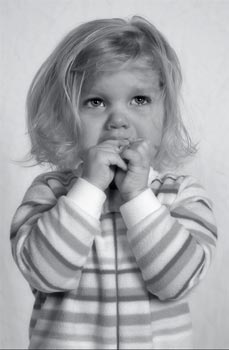The Potential Aftereffects of Hurricanes Katrina and Rita: Understanding Trauma Responses in Children By Diane N. Roche, Ph.D.

Hurricanes Katrina and Rita have had a tremendous impact, not only on property, but on our psyches. This is particularly true of children who, even if they didn't suffer a direct physical effect from the storms, were bombarded by television coverage and were witness to their family's storm preparations. Not all children were traumatized by these events, but children who were more directly affected and those who are more vulnerable to trauma (those with greater numbers of previously experienced traumas or preexisting mental health problems) might show signs of post traumatic stress disorder (PTSD). It is important for parents to be tuned in to possible problems so that they can be addressed sooner, rather than later.
PTSD symptoms may appear immediately after the traumatic event, or they may occur days, weeks, or even months later. They include:
- Feeling afraid or anxious "out of the blue;" re-experiencing the event through play or in nightmares or flashbacks; having unwanted thoughts; or experiencing fear, anxiety, or distress related to triggers or events that are somehow similar to the traumatic event.
- Avoidance of reminders of the event (such as avoiding activities, places, or people that remind the child of the event, or "forgetting" aspects of the trauma).
- Overarousal (such as feeling jumpy, having difficulty concentrating or sleeping, being irritable, or being easily startled).
Very young children
Very young children may not show "typical" symptoms of PTSD. Children under age five may experience more vague symptoms such as crying, trembling, or clinging excessively; being afraid of strangers; being afraid to be separated from parents or loved ones; being afraid in a wide variety of situations; and sleep disturbances. Very young children may also display post-traumatic play, in which they compulsively repeat aspects of the trauma or themes related to their experience of the trauma. Young children may also regress to behaviors that they exhibited at earlier ages such as thumb-sucking and bed wetting.
Elementary school children
Elementary school-aged children may show extreme withdrawal, disruptive behavior, or inability to pay attention. Regression, nightmares, sleep problems, irrational fears, irritability, refusal to attend school or difficulties with schoolwork, depression, complaints of physical symptoms with no medical basis, and outbursts of anger are also common in children between the ages of six and eleven.
Co-occurring problems
In addition to symptoms of PTSD, children and adolescents who have experienced traumatic events often also exhibit additional problems, such as other anxiety disorders, depression, problems with attention, difficulty trusting others, oppositional behavior, and substance abuse.
Guidelines for seeking professional assistance
Parents should consider seeking outside professional mental health assistance if life for the child does not get back to normal fairly quickly, or the child experiences symptoms for more than a short period (a few days to a month, depending on what you would anticipate based on past knowledge of your child's responses). In addition, parents concerned about a child's response for any other reason should consider having the child meet with a professional, even if only for one session, to rule out the need for formal treatment. Research suggests that treatment for children and adolescents very soon after a traumatic event may reduce some of the symptoms of PTSD and prevent future problems.